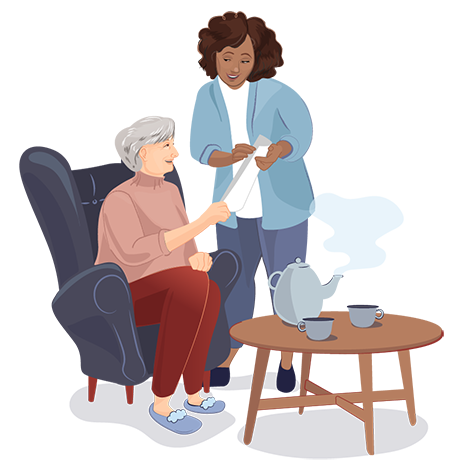
Balancing Safety and Independence in Live-in Care



Speak to one of our experts
Our friendly experts are here to help from 9am to 7pm, 7 days a week.
Introduction
When people require live-in care, balancing safety and independence is an important consideration. Caregivers naturally want to keep their clients safe, but it’s also crucial to allow people to maintain their self-sufficiency and engage in daily activities.
The good news is that with some thoughtful planning and adaptation, people can continue to enjoy enriched, autonomous lives with the added security of live-in support.
Promoting Independence in Daily Activities
For many people, performing self-care activities like bathing, getting dressed, and moving around independently is extremely important for maintaining dignity and self-esteem. Caregivers can enable independence by ensuring assistive devices like shower chairs, grab bars, and walkers are available and used properly.
Establishing routines with the person, allowing ample time for self-care tasks, and providing standby assistance will all reinforce self-sufficiency. Proper mobility aids and clear pathways can prevent falls, and with appropriate assistance and supervision, many people can continue directing their daily care.
Encouraging Engagement and Social Connections
Beyond basic activities, it’s vital for quality of life that people stay meaningfully engaged through social connections, pursuits, and community participation. As such, caregivers should learn ’ hobbies and interests, and help facilitate engaging in those activities safely.
This may mean assisting with transportation to a weekly game night, ensuring proper art supplies are easily accessible, or arranging visits with family and friends. Regular social interaction provides stimulation and purpose. With the caregiver’s support, elderly people can maintain social networks and enjoy stimulating pastimes that enrich daily living.
Adapting the Home Environment
Simple adaptations to living spaces can make all the difference in safeguarding independence. Installing grab bars in bathrooms, adding railings on both sides of stairways, removing rugs and clutter, and keeping pathways well-lit can prevent hazardous falls and enable self-sufficiency in moving about the home. Other helpful modifications include raised toilet seats, seating in showers, adaptive utensils, and lever-style door and faucet handles.
Caregivers should regularly scan for potential hazards and discuss ways of making the home safer and more elderly-friendly. These steps allow seniors to inhabit familiar, convenient surroundings while minimising risk.
Working as a Team
The caregiver and care-receiver should function as a team that balances safety and independence. Caregivers should consult with care-receivers and family members to understand their capabilities and limitations and come up with agreements about daily routines and rules. It’s important to be attentive and offer help when needed, whilst still fostering independence in tasks that can be managed alone.
Clear communication ensures both parties know what to expect and any issues identified can be flagged early on . Adjustments may be needed over time as abilities evolve. With mutual understanding and responsiveness, caregivers – can work to maintain optimal security, dignity and freedom.
Living independently while also being safe is an attainable goal with live-in care. As trusted partners, caregivers can enrich people’s lives by guiding adaptations that minimise risk whilst supporting purposeful living. With the proper assistance, people can continue directing their care and engagements whilst enjoying enhanced feelings of security and connection.
Find the Support You Need With The Live In Care Company
To learn more about how live in care can benefit your loved ones, please click here. We are highly experienced at matching the right carer to the client and pride ourselves on how we deliver exceptional care in all areas.







